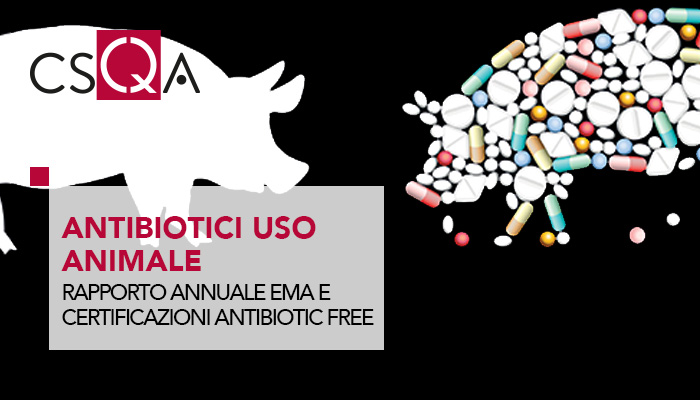
EMA's annual report on the European surveillance of veterinary antimicrobial consumption (ESVAC) shows that, since 2011, European countries have substantially reduced sales of veterinary antibiotics in animals. According to data from 25 countries that continuously supplied inputs for the entire period 2011-2021, overall sales of veterinary antibiotics decreased by 47% in this interval, reaching the lowest value on record.
Again according to the EMA, annual sales of antibiotics on Italian farms have more than halved in ten years, but remain among the highest in Europe.
In our country, from 2011 to 2020, sales fell by 51%.
If we consider the tons of active ingredient, in 2020 Italy was the third country for sales after Spain and Poland. In relation to the animal population on farms, the Peninsula was second after Poland.
In 2019, Italy adopted a digital traceability system for veterinary medicines with data also at farm level, which is an "important step towards the development of an adequate antimicrobial management programme", writes EMA. The data, underlines the EU agency, "show progress towards achieving the objectives" of the National Antibiotic Resistance Plan, adopted in 2017.
Returning to the European landscape, sales of antibiotic classes considered of fundamental importance in human medicine also decreased significantly between 2011 and 2021 and represented only 5.5% of total sales in 2021. Sales of third and fourth generation cephalosporins decreased by 38%, polymyxins by 80%, fluoroquinolones by 14% and sales of other quinolones decreased by 83%. These antibiotics should be used with prudence and responsibility to preserve their efficacy and mitigate the potential risk to public health, as outlined in the categorization of the Ad Hoc Expert Group (AMEG) on antimicrobial advice .
This ESVAC report includes, for the first time, information on progress towards the goal of the European Commission's Farm to Fork strategy, at the heart of the European Green Deal , to reduce the sale of antimicrobials for farmed animals and aquaculture in the EU. In three years, between 2018 and 2021, the 27 EU Member States have already achieved an 18% reduction, around a third of the 50% reduction target set for 2030.
For each country participating in the ESVAC project there is a separate section presenting sales trends by antimicrobial class . Selected countries describe their main measures to address AMR and how these activities contribute to the observed changes in sales in their country. The measures include:
- national action plans
- national campaigns for prudent use of antimicrobials in animals
- restrictions on the use of certain antimicrobials in food-producing animals
- measures to control the prescribing of antimicrobials in animals.
CSQA has prepared four voluntary standards/disciplinary to support companies that intend to certify products of animal origin or derived from animals that have not undergone antibiotic treatments on farm for the entire period of life or part of it.
The certification allows to support "Antibiotic free" or "Breed without antibiotics" claims. The standards are voluntary and apply to:
- Pork and derivatives
- Poultry meat and derivatives
- Eggs and derivatives
- Fish and derivatives